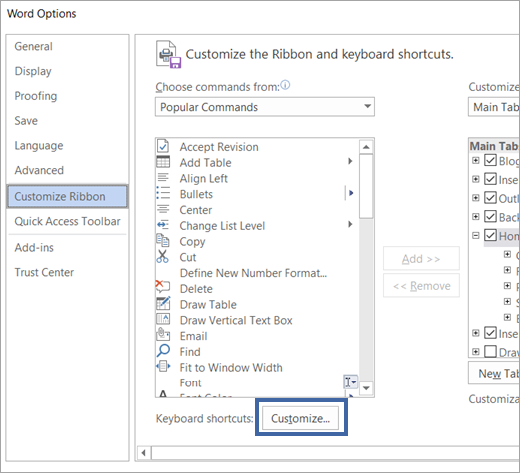고정 헤더 영역
상세 컨텐츠
본문

If you are writing any technical or mathematical content in Microsoft Word, then it is very much likely that it contains Greek alphabets or Greek letters. They are widely used in fields of science and engineering to demote various constants, values and phenomenon / particle.

Greek Alphabets

Keyboard Shortcuts For Word
Keyboard shortcuts can save you a lot of time, so here's a guide to the most useful keyboard shortcuts in Word you should start using today. Check out the products mentioned in this article. Microsoft Word is undoubtedly one of the best word processors around. Whether you want to write a letter, story, essay, or something else entirely, Microsoft Word can handle it. To become a Word expert, you need to master its keyboard shortcuts. I'm away from my desktop where Word 2003 is still installed, and I don't recall all the menus and their shortcuts. If no one else replies, I'll post some in a couple of days. Meanwhile, if you want to experiment, press Ctrl+Alt+number-pad-plus-sign and then press some Alt-key shortcut. The keyboard shortcut assignment dialog will open and show.
Greek alphabet has both capital and small versions. All the Greek alphabets finds it use in science and mathematics. However, unlike Latin based script that used 26 letters, Greek only has 24 letters. For a complete list of upper and lower case Greek alphabet visit blog.
Microsoft Word shortcut for Greek Alphabet
Keyboard Shortcuts For Wordpress
There are many ways to type Greek alphabet in Microsoft Word. Novice users use the Graphical User Interface (GUI) method to insert Greek Alphabets. It involves navigating Insert Tab and selecting desired Greek symbol from Symbols. However, this method is cumbersome and inefficient as it takes multiple click.
LaTeX type shortcut for Greek Alphabets in Ms Word
Many users prefer LaTeXtype shortcut for tying Greek Alphabets. However, very few Microsoft Word users know that similar shortcut exists in Ms Word too. Table below lists Ms Word shortcut for Greek Alphabets.
Ms Word Alt code for Greek Alphabets
You can quickly get Greek letter using Alt shortcut. Press Alt key and following 3 digit number for Greek alphabet before releasing Alt key.
| Name | Greek Alphabet | Equation Editor Shortcut | Alt Code Shortcut |
|---|---|---|---|
| Alpha | α | alpha | Alt + 945 |
| Beta | β | beta | Alt + 946 |
| Gamma | γ | gamma | Alt + 947 |
| Delta | δ | delta | Alt + 948 |
| Epsilon | ε | epsilon | Alt + 949 |
| Zeta | ζ | zeta | Alt + 950 |
| Eta | η | eta | Alt + 951 |
| Theta | θ | theta | Alt + 952 |
| Iota | ι | iota | Alt + 953 |
| Kappa | κ | kappa | Alt + 954 |
| Lambda | λ | lambda | Alt + 955 |
| Mu | μ | mu | Alt + 956 |
| Nu | ν | nu | Alt + 957 |
| Xi | ξ | xi | Alt + 958 |
| Omicorn | o | omicorn | Alt + 959 |
| Pi | π | pi | Alt + 960 |
| Rho | ρ | rho | Alt + 961 |
| Sigma | σ | sigma | Alt + 963 |
| Tau | τ | tau | Alt + 964 |
| Upsilon | υ | upsilon | Alt + 965 |
| Phi | φ | phi | Alt + 966 |
| Chi | χ | chi | Alt + 967 |
| Psi | ψ | psi | Alt + 968 |
| Omega | ω | omega | Alt + 969 |
| Name [latexpage] | Greek Alphabet | Equation Editor Shortcut | Alt Code Shortcut |
|---|---|---|---|
| Alpha | A | Alpha | ALT + 913 |
| Beta | B | Beta | ALT + 914 |
| Gamma | Gamma | Alt + 915 | |
| Delta | Delta | Alt + 916 | |
| Epsilon | E | Epsilon | Alt + 917 |
| Zeta | Z | Zeta | Alt + 918 |
| Eta | H | Eta | Alt + 919 |
| Theta | Theta | Alt + 920 | |
| Iota | I | Iota | Alt + 921 |
| Kappa | K | Kappa | Alt + 922 |
| Lambda | Lambda | Alt + 923 | |
| Mu | M | Mu | Alt + 924 |
| Nu | N | Nu | Alt + 925 |
| Xi | Xi | Alt + 926 | |
| Omicorn | O | O | Alt + 927 |
| Pi | Pi | Alt + 928 | |
| Rho | P | Rho | Alt + 929 |
| Sigma | Sigma | Alt + 931 | |
| Tau | T | Tau | Alt + 932 |
| Upsilon | Upsilon | Alt + 933 | |
| Phi | Phi | Alt + 934 | |
| Chi | X | Chi | Alt + 935 |
| Psi | Psi | Alt + 936 | |
| Omega | Omega | Alt + 937 |
Conclusion
LaTeX way of typing Greek alphabet is the fastest and easiest way. Study shows that it can use save up to 80% of equation writing time. Another time saving method is Alt method but you need to remember unique 3 digit number for each Greek letter.





